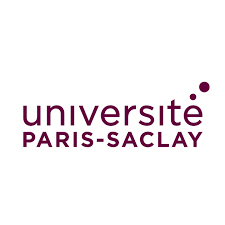-
Aeronautics - Aerospace - Defence
-
Chemistry - Materials
-
Complex systems and software engineering
-
Energy, Ecology, Environment
-
Quality of life - Health - Food
INSTITUTE OF MOLECULAR CHEMISTRY AND MATERIALS OF ORSAY (ICMMO)
Research unit
The ICMMO is one of the most important research structures in chemistry in France. It is made up of nine scientific teams, a high-performance instrumental platform and a precision mechanics workshop. Its research activities range from organic chemistry to materials chemistry and are grouped into 4 axes: chemistry for health, chemistry for energy, chemistry for information and chemistry for the environment.
Innovation themes
- Energy, Ecology, Environment
- Instrumentation, electronics, robotics and cobotics
- Complex systems and software engineering
- Modelling and simulation
- Quality of life - Health - Food
- Chemistry - Materials
- Aeronautics - Aerospace - Defence
- Climate (observation - monitoring), environmental management, eco system
- Photonics - optical materials, application nanotechnology
- Mineral (materials, nanomaterials)
- Energy
- Green chemistry
- Organic (heavy, fine)
- Physical chemistry (electrochemistry, thermochemistry...)
- Industrial process engineering
- Therapeutic technologies (drugs, genetics, biomarkers, biomolecules, etc.)
- New energy sources and production system
- Analytical chemistry
- Eco construction, eco process, eco product
Bâtiment 670, 17 Avenue des Sciences
91400 ORSAY
Expertises
- crystallogenesis and physico-chemistry of oxides
- recrystallization, microstructure and texture
- advanced materials for photonics, hydrogen
- vigour
Synthesis, properties and modelling of materials:
- functional materials :
type oxides, chalcogenides, oxychalcogenides, pnictides and oxypnictides
development of materials in monocrystalline or polycrystalline form
study of the physical properties in connection with those of their crystalline or magnetic structures
study the nucleation, growth and stability of thin layers (deposited and/or natural) in relation to their structure and mechanical characteristics
reactivity of organometallic precursors
reactivity of complex metal alloys
- functional thin films and surfaces :
characterization of layer microstructure (SIMS, DRX, MEB)
characterization of growth and residual constraints at different scales
characterization of mechanical strength (bending test under SEM, indentation)
- digital modeling :
thermodynamic studies of metallic nanoparticles
study of electronic structures and dynamic properties using ab initio calculations
development of energy models for the description of oxide systems
- advanced materials for photonics:
photosensitivity of silica to femtosecond laser
punctual defects of silica glasses
structural modifications of doped silicas under UV irradiation
interaction of electron beams and doped silica glasses
dynamic description in a disorderly environment
high temperature processing of photonic crystals
Inorganic chemistry:
- molecular switching to nano devices for electronics
- nanomagnetic systems
- photochromism and photomodulable systems
- mixed hybridization systems after C60
- artificial photosynthesis
- iron complexes, bio-inspired oxidation catalysts
- spin-crossover nanomaterials - optical spin-state control
Molecular catalysis :
- homogeneous and heterogeneous asymmetric catalysis
- Ionic liquids
- asymmetric catalysis
- catalytic polycyclisations
- chirality
- lanthanides
Bioorganic and bioinorganic chemistry :
- synthesis and evaluation of enzyme inhibitors for therapeutic purposes
- design and synthesis of new metal complexes
- study of their interactions with biomolecules
- biosensors and biochips for medical diagnosis and analysis
Synthesis of bioactive molecules and macromolecules :
- nodulation and fixation of atmospheric nitrogen
- development of new sialic acid derivatives, possible first-line antivirals
- one-pot protection and reactions
- surface functionalisations
- polymer synthesis and characterization
- synthesis and grafting on gold surface
Peptidomimetic photochemistry, alternative processes :
- amino acids with restricted conformation and peptidomimetic foldamers
- synthesis by photochemistry, organocatalysis and silica reagents
- green chemistry and alternative synthesis processes
NMR in an oriented environment:
- design and characterization of oriented molecular materials
- anisotropic analytical applications
- analysis of the natural isotopic distribution of deuterium in unsaturated fatty acids.
- enantiomeric NMR visualization in chiral liquid crystal medium
- new methodological developments in isotropic and oriented NMR.
- application of NMR in chiral oriented solvent to the study of reaction mechanisms.
- nanostructured soft materials, structure and dynamics
- computer simulation of NMR in an oriented environment
Methodology, synthesis and therapeutic molecules :
- Indoles: Methodology and Total Synthesis
- nitroso Diels-Alder
- cycle transposition reaction by metathesis
- chirality memory
- synthesis of cyclopropanic amino acids and their phosphonic analogues
- synthesis of phosphonic heterocyclic amino acids
Applications sectors
- Biotechnology
- Other business
- Energy
- Health / wellness
- Electronic / photonics
- Chemistry / Plastics (Glue, Plastic, Rubber...)
- Materials (Metal, Glass, Ceramic, Composite...)
- Cosmetics
Total number of employees
Number of researchers : 99
Number of doctoral students : 67
Equipment(s) open to collaboration
- SEM Scanning Electron Microscopies
- MET Transmission Electron Microscopies
- STM / AFM (Near Field Microscopy)
Spectroscopies:
- IRTF (Fourier Transform Infrared)
- NMR (Nuclear Magnetic Resonance) (a 2H cryoprobe unique in the world within the laboratory)
- RPE (Paramagnetic Resonance Electronics)
- SM / LCMS (Mass Specctrometry)
- XPS (X-Ray Photoelectron Spectroscopy)
X-ray diffraction :
- RX thin film diffractometer
- RX diffractometers on single crystal
- RX powder diffractometer
Magnetometry :
- SQUID (Superconducting QUantum Interference Device)
Keywords
- atom economy
- sustainable development
- eco-compatible metal
- oxygen-reducing activation
- effective catalysts
- amino acids
- amino phosphonates
- cycloaddition[2+2]
- continuous flow
- heterocycles
- mesofluidics
- organocatalysis
- peptides
- alternative solvents
- asymmetric synthesis
- chemoselectivity
- stereoselectivity
- glyco-chemistry
- Glycosaminoglycans
- Glycomimes
- sustainable development
- renewable resources
- influenza
- sialic acid
- hemaglutinin
- regioselective protection
- tandem catalysis
- catalyst recycling
- biomass recovery
- (photo)switching
- calixarenes
- carbon nanotubes
- sol-gel hemi
- nanostructured oxides
- Prussian blue analogues
- ballistic thermal transport
- imaging furnace
- chemical vapour deposition
- Janus/Coeur-Coquille Competition
- NanoAlliages
- electrochemical engineering
- CO2 recovery
- lithium batteries
- hydrogen
- photoelectrochemistry
Valuation offer
Industrial and scientific relations
Scientific collaborations
- France: CEA-Saclay, ISMO-Orsay, Laboratoire de Chimie Physique LCP-Orsay,
- Europe: Germany, Czech Republic, Sweden, Spain, England
- International: Brazil, United States, Canada, Tunisia, Cameroon
Private collaborations
- collaboration with several large industrial groups
Establishments of affiliation
